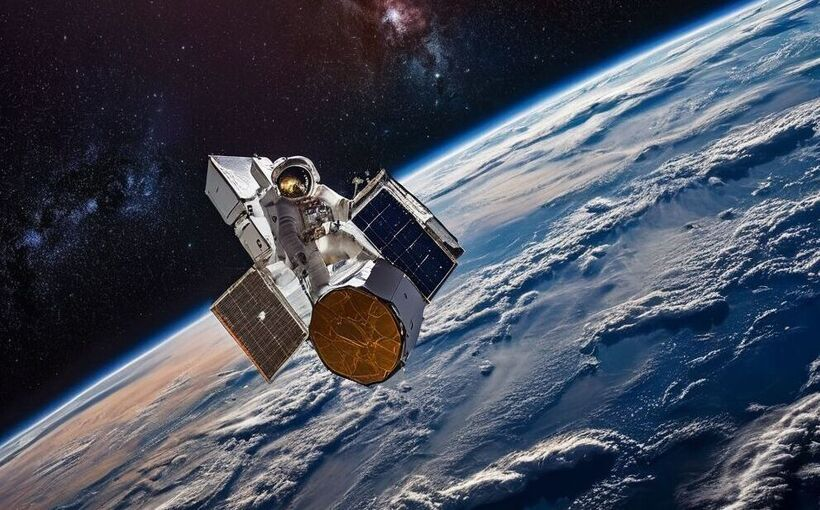Introduction
In recent years, Kenya has emerged as a central player in East Africa’s journey toward harnessing space technology, with the Kenya Space Agency (KSA) at the forefront. As satellite applications become increasingly vital for communication, weather forecasting, environmental monitoring, and national security, KSA’s work is helping position the country—and the region—on the global space map. With its unique equatorial location and growing technical capacity, Kenya is well-placed to lead regional satellite initiatives that can foster economic growth, enhance scientific collaboration, and address pressing societal challenges. This article explores the role of the Kenya Space Agency in driving satellite innovation, and its broader impact across East Africa.

Laying the Foundation: Kenya’s Strategic Approach to Space Development
Established in 2017, the Kenya Space Agency serves as the national body responsible for coordinating and regulating space-related activities. It inherited its mandate from the defunct National Space Secretariat, signaling Kenya’s renewed commitment to space research and satellite development. One of the agency’s core goals is to promote the peaceful use of outer space while developing domestic capabilities in satellite manufacturing, launching, and applications.
The agency operates under Kenya’s Ministry of Defence, but its remit stretches far beyond military uses. Through policy frameworks and long-term strategic plans, KSA is working to integrate space technologies into national development. Kenya’s Vision 2030—a strategic plan for socio-economic transformation—has included space technology as a pillar of innovation, with KSA playing a key role in implementation.
Satellite Development and Regional Collaboration
One of the agency’s major achievements was the successful launch of 1KUNS-PF, Kenya’s first nano-satellite, in 2018. Developed in partnership with the University of Nairobi and Japan Aerospace Exploration Agency (JAXA), this milestone marked Kenya’s entry into orbital space. It provided invaluable experience in satellite design, operations, and international collaboration.
Since then, KSA has focused on expanding technical expertise and infrastructure for future satellite missions. This includes plans for earth observation satellites that can support agriculture, disaster management, and environmental conservation not only in Kenya but across neighboring countries. By promoting the development of satellite data-sharing networks, KSA is encouraging regional integration in space-based research and policy-making.
Applications for Agriculture, Security, and Climate Monitoring
KSA’s satellite initiatives have significant implications for sectors critical to East Africa’s stability and growth. In agriculture, satellites enable real-time monitoring of crop conditions, rainfall patterns, and soil moisture—data that can help farmers make more informed decisions and improve yields. For security and border surveillance, satellite imagery can assist governments in tracking movement in remote areas and managing resources in contested zones.
Moreover, as climate change increasingly affects weather predictability and resource availability, the ability to monitor environmental shifts via satellite is invaluable. Kenya’s investments in remote sensing are laying the groundwork for a regional climate observation system that can assist with drought prediction, flood management, and ecological preservation efforts.
Building Local Capacity through Education and Innovation Hubs
A key part of KSA’s strategy involves investing in local talent and research institutions. The agency has partnered with universities and technical colleges to support aerospace engineering and space science programs. It is also working to develop a National Space Centre that will serve as a hub for satellite development, data analysis, and public-private collaboration.
These initiatives are designed not only to reduce reliance on foreign expertise but also to position Kenya as a regional leader in space education and innovation. In the long run, KSA aims to foster a space ecosystem that can support domestic startups, attract international investment, and generate employment for East Africa’s growing youth population.
Conclusion
The Kenya Space Agency stands at the intersection of science, development, and regional integration. Its efforts in advancing satellite technology are already bearing fruit, with tangible benefits for agriculture, environmental management, and national security. More importantly, KSA is creating a foundation for long-term innovation and self-reliance in East Africa’s space sector. By investing in local talent, infrastructure, and regional cooperation, Kenya is not only pioneering the skies—it is shaping a future where space serves the needs and aspirations of its people. As space becomes more accessible, the region’s continued progress will depend on how well institutions like KSA can navigate both the technical and political dimensions of this frontier.


